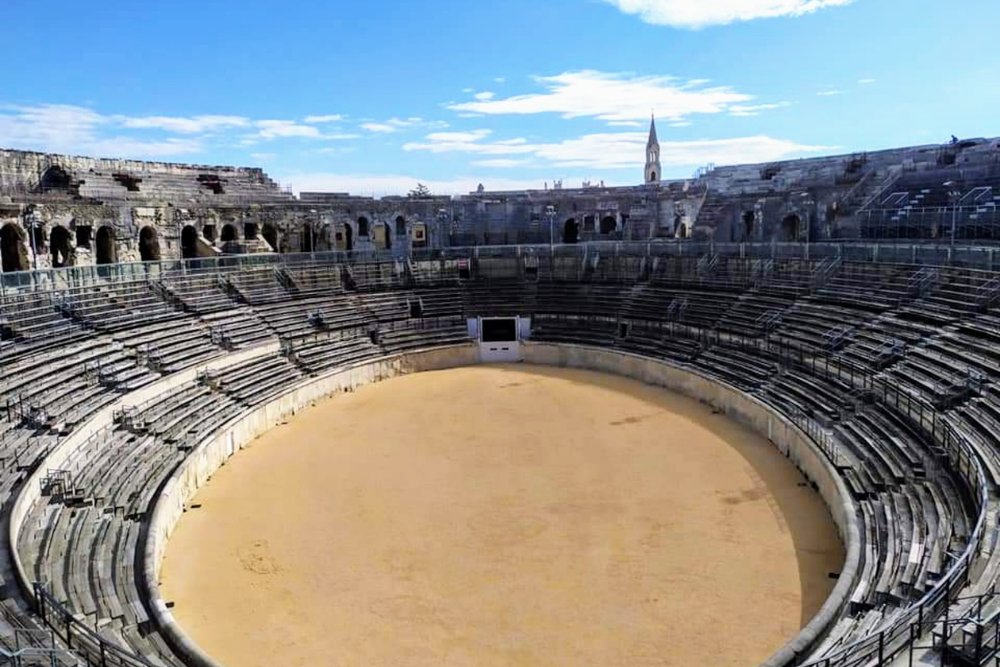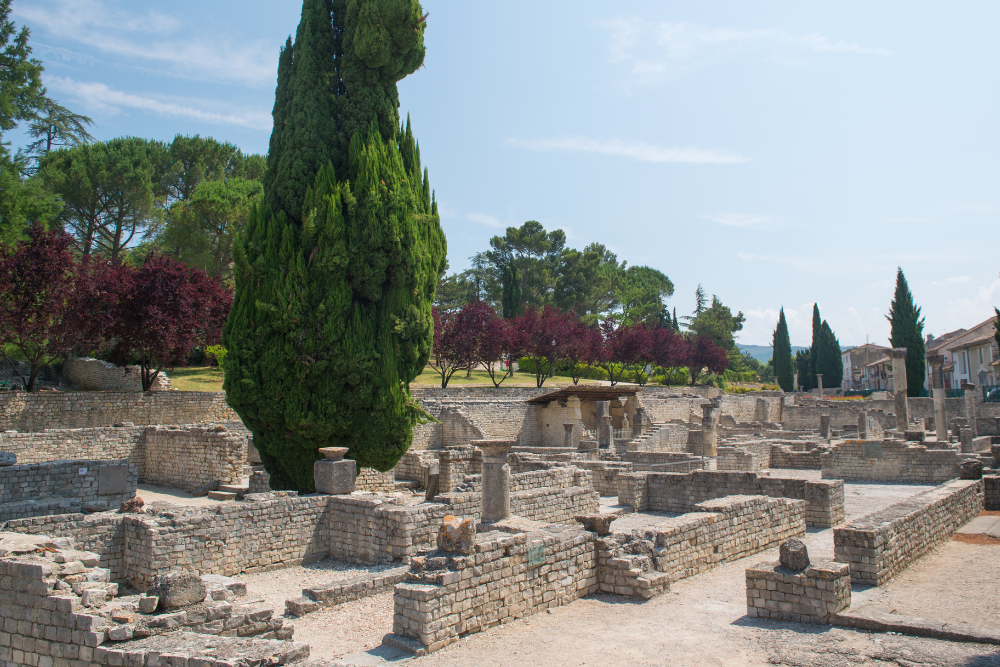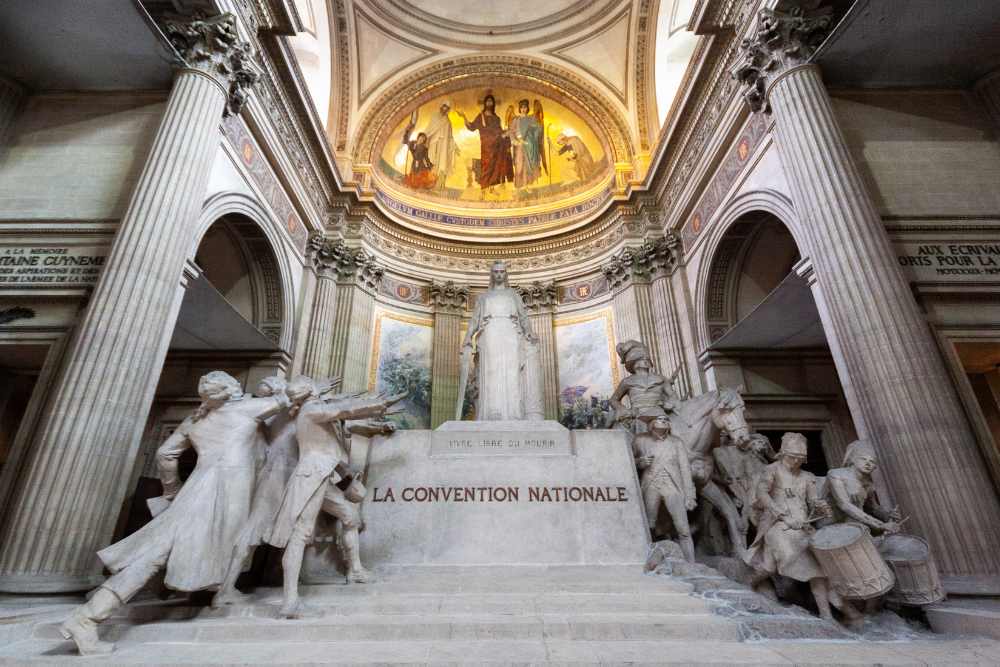Southern France is renowned for its picturesque landscapes, sun-drenched vineyards, and charming villages, but it also holds a treasure trove of ancient history. Among its most captivating attractions are the Roman ruins scattered across the region, offering visitors a chance to step back in time and experience the grandeur of the Roman Empire. From well-preserved theaters to massive amphitheaters and ancient temples, the Roman ruins of Southern France are an unmissable journey into the past.
In this guide, we’ll explore some of the most iconic Roman ruins in Provence and the surrounding regions, where history and heritage come alive amidst the stunning landscapes of the South of France.
1. Nîmes: The French Rome
Often referred to as the “French Rome,” Nîmes is one of the best-preserved Roman cities in the world, with a rich heritage that spans over 2,000 years. Located in the Languedoc-Roussillon region, Nîmes boasts some of the most iconic Roman structures that still stand proud today.
Top Roman Sites in Nîmes:
- The Arena of Nîmes (Arènes de Nîmes): This well-preserved Roman amphitheater is one of the largest in the Roman world. Built around 70 CE, it could hold up to 24,000 spectators. Today, it is still used for bullfights, concerts, and other events. The impressive exterior and the intricate interior make it an extraordinary example of Roman engineering.
- The Maison Carrée: A stunning example of Roman architecture, the Maison Carrée is a temple dedicated to the sons of Agrippa, built in the 1st century BCE. The temple’s stunning façade with Corinthian columns and its remarkably well-preserved state make it one of the most beautiful examples of Roman Neoclassical architecture in the world.
- The Pont du Gard: A short drive from Nîmes, the Pont du Gard is an ancient Roman aqueduct bridge that spans the Gardon River. Standing over 160 feet tall, the bridge is a UNESCO World Heritage site and a breathtaking example of Roman engineering. It was built in the 1st century CE to transport water to the city of Nîmes and is still remarkably well-preserved.
2. Arles: The Gateway to Roman Provence
The city of Arles is another must-visit destination for anyone interested in Roman history. Situated on the Rhône River, Arles was once an important Roman colony and later became the capital of the province of Gaul. Today, the city is home to some of the most important Roman ruins in the region.
Top Roman Sites in Arles:
- The Arles Amphitheater (Les Arènes d’Arles): This Roman amphitheater, built in the 1st century CE, could accommodate up to 20,000 spectators. It was used for gladiatorial contests and other public spectacles. Today, the amphitheater hosts bullfights and performances, and visitors can walk through its arches and terraces to imagine the events that once took place.
- The Theater of Arles: Dating back to the 1st century BCE, this Roman theater is partially restored and can still be visited today. It once hosted theatrical performances, with a capacity for up to 10,000 spectators. The backdrop of the theater offers a glimpse into Roman entertainment.
- The Alyscamps: The Alyscamps was once a Roman necropolis, famous for its tree-lined avenue of tombs. It is considered one of the most beautiful and atmospheric historical sites in France. Today, it remains a peaceful and evocative site to explore, offering insight into Roman burial practices.
3. Vienne: A City with a Rich Roman Legacy
The city of Vienne, located on the banks of the Rhône River near Lyon, boasts a rich Roman history that dates back to the 1st century BCE. Once an important Roman city, Vienne is home to some impressive Roman ruins that showcase its historical significance.
Top Roman Sites in Vienne:
- The Temple of Augustus and Livia: This stunning Roman temple was dedicated to Emperor Augustus and his wife, Livia. The temple’s impressive facade, with its Corinthian columns, is a beautiful example of Roman architecture and still stands in remarkably good condition.
- The Roman Theater of Vienne: The Roman Theater of Vienne was built in the 1st century BCE and could hold up to 13,000 spectators. Today, it remains one of the most impressive ancient theaters in France, and visitors can admire its architecture while learning about the rich history of the region.
- The Gallo-Roman Museum of Vienne: For those who want to learn more about the history of Roman Vienne, the Gallo-Roman Museum offers an extensive collection of artifacts, including sculptures, mosaics, and pottery. The museum also provides detailed information about the city’s role in the Roman Empire.
4. Orange: A Treasure Trove of Roman Monuments
The small town of Orange, located in the Vaucluse department of Provence, is home to some of the most well-preserved Roman ruins in France. Known for its monumental theater and triumphal arch, Orange offers a glimpse into Roman life during the Empire’s peak.
Top Roman Sites in Orange:
- The Roman Theater of Orange: The Roman Theater of Orange, built in the 1st century CE, is one of the best-preserved theaters from ancient Rome. The theater could hold up to 10,000 spectators and is known for its magnificent, semi-circular stage and towering façade. The theater still hosts performances today, and its acoustics are renowned for being exceptional.
- The Triumphal Arch of Orange: Dating back to the 1st century CE, the Triumphal Arch of Orange was built to commemorate the victories of the Roman legions in the East. The arch features intricate reliefs that depict military campaigns and victories, and it stands as a symbol of Roman power and glory.
5. Vaison-la-Romaine: A Hidden Roman Gem
A little off the beaten path, Vaison-la-Romaine is a small town in the Vaucluse region of Provence that boasts some of the best-preserved Roman ruins in France. It is an excellent destination for those who want to explore a lesser-known archaeological site while still experiencing the grandeur of the Roman Empire.
Top Roman Sites in Vaison-la-Romaine:
- The Roman Theater of Vaison-la-Romaine: This Roman theater, built in the 1st century CE, could seat around 1,000 spectators. The theater is remarkably well-preserved and offers a fascinating insight into Roman entertainment and performance.
- The Archaeological Site of Puymin: The Puymin archaeological site features the remains of a large Roman town, including houses, baths, and public buildings. Visitors can explore the remains of ancient villas, streets, and shops, making it one of the most extensive Roman archaeological sites in the region.
- The Roman Bridge: The Roman Bridge in Vaison-la-Romaine, which crosses the Ouvèze River, is another remarkable relic of the past. Dating back to the 1st century BCE, the bridge is still in use today and offers a picturesque view of the town and its surroundings.
Conclusion
Southern France is a treasure trove of Roman ruins, offering a fascinating journey through history for art lovers, history buffs, and anyone interested in experiencing the remnants of the Roman Empire. From the grand Pont du Gard in Nîmes to the atmospheric Alyscamps in Arles, these ancient sites provide a unique opportunity to walk in the footsteps of the Romans and discover the marvels of their architectural ingenuity. Whether you are exploring grand amphitheaters, ancient temples, or quiet archaeological sites, the Roman ruins of Southern France offer an unforgettable glimpse into the past.












